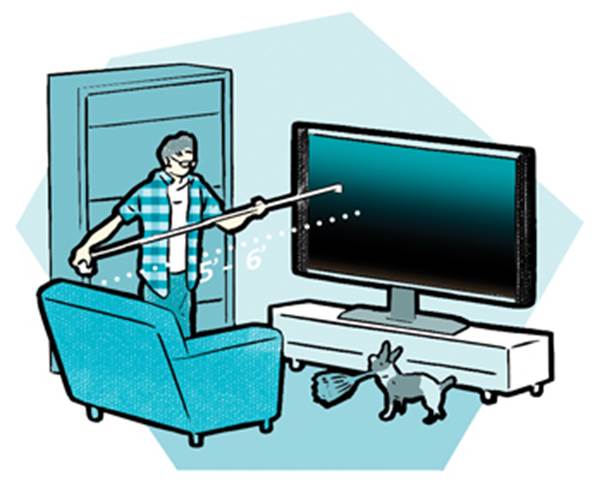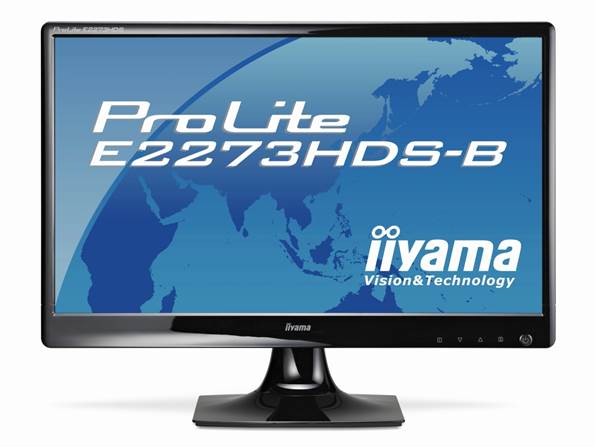We help you select the best available screen
for your new PC
When you’re assembling a PC, the choice of
screen can have a larger effect than you might realize. There’s no point
packing in the most powerful graphics cards if you don’t have a screen that can
show off the pixels. Similarly, if you have a screen with a resolution higher
than your graphics card can manage, you’ll have wasted money on an expensive
piece of equipment you can’t use! Clearly, buying the right screen is important.
However, it isn’t just about getting the right resolution, or the right size
monitor; it’s about the underlying technology and finding the monitor that
performs best at what you want it for. Using the system-building tool on
Computer Planet as a guide to the current monitor market, we’ll show you how to
appraise a monitor’s capabilities and decide whether or not it’s the right one
for the computer you want to create.

We
help you select the best available screen for your new PC
TN Panel Monitors
TN panels are by far the most popular kind
found in LCD monitors, but they’re also the least specialized. Inexpensive to
produce, with excellent response times, TN panels are ideal for displaying the
kind of fast-paced graphics found in games, and they’re by far the cheapest
kind on the market. The combination of low price and generally good performance
makes them an obvious bargain, but it’s also true that many people simply don’t
know any better.
For example, TN-based monitors do have
drawbacks. Color reproduction is often inaccurate and washed out (although the
move to LED backlights has improved that) and viewing angles can be bad (under
170º, sometimes under 160º) and contrast ratios are low. If you buy a
particularly cheap example, you may notice that your picture looks discolored,
blacks appear as a washed-out charcoal grey, and that if you move too far up,
down or to the sides you’re unable to see the image on the screen properly.
That said, as long as you avoid the
cheapest end of the spectrum, a TN panel will fit most of your needs without
you ever noticing a problem. If you don’t consider yourself to be a stickler
for performance or you just want a large screen that isn’t prohibitively
expensive, a TN panel will satisfy.
Good for: Gaming and general use PCs and
system-building on a budget.
Bad for: Design work and multimedia
viewing.
Budget Choice: 19” liyama Prolite E1906S
If saving money is your goal, it’s hard to
go wrong with Iiyama’s Prolite E range. This range of Eco-monitors offers
extra-low power consumption (22W even at max brightness) and comes with
built-in speakers to save you even more money.

19”
liyama Prolite E1906S
The 4:3 aspect ratio, 19” screen and
resolution of 1280x1024 does suggest that that it’s best used for business,
rather than pleasure, because you can lose a lot of screen real estate to black
bars if you try watching video on it. However, picture quality is solid, color
reproduction is good and contrast is high. Priced around $160, it’s tough to
complain about the quality or performance, even if the size is maybe a little
unambitious.
So in fairness, it’s a solid performer that
doesn’t cut corners on features (it’s adjustable, which not all cheap monitors
are) and not only is it fair, the low power consumption can actually save you
money. Sounds fair to us.
Performance Choice: 22” Iiyama Prolite E2273HDS
At the slightly more expensive end of the
spectrum, the Iiyama E2473HDS is a fairly standard monitor with integrated
speakers and HDMI input. The 22” widescreen panel makes it a good choice for
entertainment viewing, especially since it’s full HD with HDMI support.

22”
Iiyama Prolite E2273HDS
Although the overdrive mode does mean you
get some reverse ghosting, it’s possible to manually control the level through
five different settings, so you can tweak them to reach your preferred
compromise between response times and ghosting artefacts. That’s something
enthusiasts on a tight budget will appreciate.
The contrast ratio is pleasingly high, the
TN panel means there’s a low chance of ghosting or any visible input lag, and
although the viewing angles aren’t great it’ s about as good as TN panels get.
Color reproduction suffers on the default settings, but it’s possible to
calibrate manually. It isn’t perfect out of the box, but the level of control
you get means you should be able to make it so with a little work.
VA Panel Monitors
IPS panels are particularly popular in
high-end monitor
VA panel technology was initially developed
as a way to compromise between the cheap, low-quality TN displays and the
expensive, high-quality IPS displays that were the only available options at
the time. It remains as such, but it has also managed to carve out a distinct
niche for itself.
VA-based panels offer better color
reproduction and larger viewing angles than TN panels - comparable to IPS
panels in that regard - and the best contrast ratios of any type. They also
have the best saturation of any monitor type, if not the most accurate color
reproduction. They have been accused of having a markedly slower response time
than TN-based technology and a history of noticeable input lag, but in present
iterations of the technology the difference is minimal.
The problem with VA panels is their poor
response times. In standard modes they’re low, and while a technique called
‘pixel overdrive’ is sometimes used to speed it up, it creates inverse ghosting
effects and large input lag. Despite these flaws, VA panels are generally
accepted to be of a higher quality than TN panels and are used in many high-end
TV sets, where their best qualities can take center stage and their flaws are
minimized.
Good
for
Watching TV and movies.
Bad
for
Gaming and design.